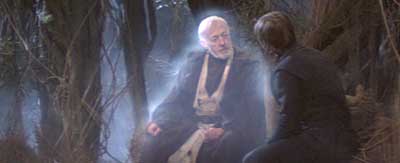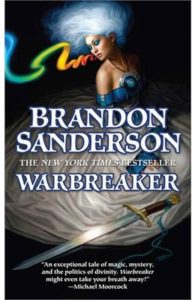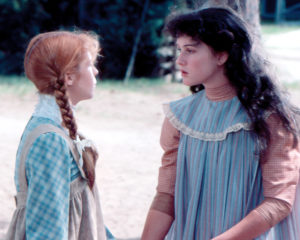As an author, when I think of an individual with Post Traumatic Stress Disorder (PTSD) my brain jumps to characters like Special Agent Leroy Jethro Gibbs (played by Mark Harmon) from NCIS or Dean Winchester (played by Jensen Ackles). According to the U.S. Department of Veterans Affairs National Center for PTSD, “PTSD (posttraumatic stress disorder) is a mental health problem that some people develop after experiencing or witnessing a life-threatening event, like combat, a natural disaster, a car accident, or sexual assault.” (VA.gov, 2019). Military veterans, emergency personnel, and those who play demon hunters on television, more than anyone, qualify in my opinion as enduring multiple life-threatening experiences. But PTSD also occurs in children, teens, adults, and even parents of children with special needs.
Anyone can develop PTSD from long exposure to high-intensity situations, extended stress, lack of sleep, grief, fear, etc. I am a mother of three amazing special needs children (two boys and a girl) who struggle with Autism Spectrum Disorders (ASD), Sensory Processing Disorder (SPD), Attention Deficit Hyperactivity Disorders—Combined (ADHD), cardiac issues, anxiety and self-harm and I suffer from PTSD. The onslaught of my children’s diagnoses, information, advice, doctors’ appointments, guilt, financial issues, and stress grew over the years like a slow-motion avalanche, burying me until I struggled to breathe. Two years ago, while still in the throes of this emotional barrage, my father died from a sudden heart attack. Our relationship had been filled with rough patches over the years and we didn’t talk much, but he was still my dad. The grief, stress, and trauma of flying to Seattle to help my bed-ridden mother deal with the aftermath of his death was the final trigger. I spiraled downward to the point that I was curled in a ball on my couch, covering my head, and yelling, “Don’t touch me” to anyone who came near.
It took another three months of night terrors, anxiety, panicking at loud noises, and freaking out over personal space issues before I admitted to myself that my life was out of control and I called my doctor. After talking over my traumatic life events and the physical, mental, and emotional reactions I had to them she diagnosed me with Post Traumatic Stress Disorder. Since then I’ve learned what events can trigger my PTSD (i.e. large crowds, competing noises, etc.) and have developed coping strategies to reduce the number of episodes I have—mostly relating to self-care.
My PTSD doesn’t only impact me. My children and husband are impacted by it as well. Although all three of my children live on the Autism Spectrum, each of them is influenced by it in a different way. The techniques one of my sons uses to cope with his autism is a natural trigger for my other son. When that occurs, they make mixed-martial arts fighting look like thumb wrestling. They need me on top of my game when that happens. But the extreme chaos of noise, motion, and emotion trigger my PTSD. Every time an episode strikes, I relieve those moments just after my dad died. My mother screaming in the dark of night. Me falling off the couch, scrambling for protection beneath the coffee table. All my senses screaming that an intruder was killing my mother. And I was going to be next.
I have spent the last two years learning pre-emptive coping skills, such as:
- Helping my children understand PTSD, why I have it, and what the triggers are.
- Time outs – not for the kids, but for me. When I feel the tension rising and fear kicking in, I let them know that mommy needs a time out. They’ve learned that when I can get 10 minutes of alone time, they will get 10 minutes of focused time with me when I come out.
- Hiking as a family (nature has a great calming effect for all of us).
- Sensory Garden – We’ve transformed our back yard into a calming tool that triggers all the senses in a positive way. It is our safe zone when any of us are stressed.
Yes, I still have those moments when the constant chaos of living within a special needs family can be overwhelming, but I’m pleased to say that the number of times I’ve curled into a ball on the couch has dramatically decreased over time.
I don’t want to scare you away from writing a character with PTSD; my goal is the exact opposite. I’m hoping that by sharing my story, you will identify ways to expand not only what your characters can do and be, but how their PTSD impacts individuals around them. discover what can cause PTSD, how to identify the triggers, what treatments are available, and find sensitivity readers who can help open up your understanding to new dimensions you may not have considered.
I suggest starting your research with the following websites:
- S. Department of Veterans Affairs: Office of Research & Development at https://www.research.va.gov/topics/ptsd.cfm (January 3, 2020).
- org: Post-Traumatic stress disorder in Civilians by David Yusko, Psy.D at https://www.anxiety.org/ptsd-non-veteran-ptsd-post-traumatic-stress-disorder-civilians (January 3, 2020).
- Faces of PTSD: Non-Combat PTSD at http://www.facesofptsd.com/non-combat-ptsd (January 3, 2020).
- Very Well Mind – Understanding PTSD in Children by Matthew Tull, Ph.D. at https://www.verywellmind.com/dsm-5-ptsd-criteria-for-children-2797288 (January 3, 2020).
- Mayo Clinic: Post-Traumatic stress disorder (PTSD) at https://www.mayoclinic.org/diseases-conditions/post-traumatic-stress-disorder/symptoms-causes/syc-20355967 (January 3, 2020).
With your newly acquired knowledge and a solid foundation of research, it will help you be prepared as an author to write that story about men, women, children, animals, and even robots with PTSD. We need more people, especially authors, who are willing to open the world to a discussion, support, and empathy regarding mental illnesses like Post Traumatic Stress Disorder.
Karen Pellett is a crazy woman with a computer, and she’s not afraid to use it. She was born in Utah, but over the years migrated to California, Arizona, Massachusetts, Maine, and the greater Seattle area. In the end, she returned to Utah (though her heart still resides in Seattle).
Karen has worked as a photographer, a business analyst, and a freelance writer for newspapers and magazines. Most of her time is spent between raising three overly brilliant (and stinkin’ cute) children, playing video games with her stepsons, and the rare peaceful moment with her husband. When opportunity provides, she escapes to the alternate dimension to write fantasy, magical realism, as well as stories and essays on raising children on the Autism Spectrum. Karen lives, plots, writes, and hides in the suburbs of Northern Utah.





